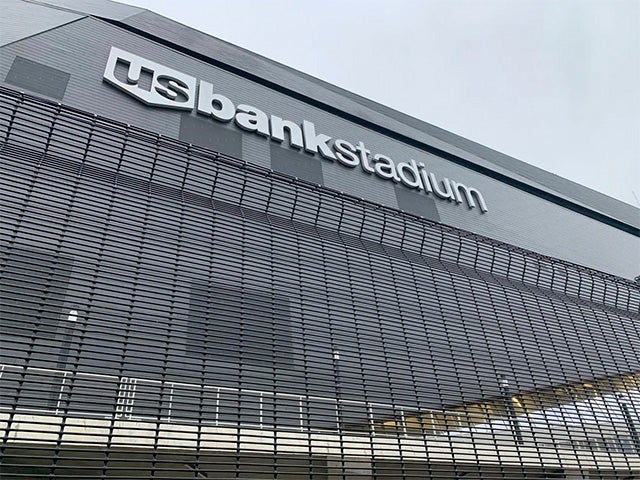$62M in public funds sought for Vikings stadium security upgrades
Published 5:44 pm Friday, December 22, 2023

- Fencing designed to deter climbing is part of security upgrades at U.S. Bank Stadium in Minneapolis. Matt Sepic/MPR News
|
Getting your Trinity Audio player ready...
|
By Matt Sepic, Minnesota Public Radio News
The agency that operates U.S. Bank Stadium plans to ask Minnesota lawmakers for more than $62 million for additional security upgrades.
In the last legislative session, the Legislature and Gov. Tim Walz signed off on nearly $16 million to install vehicle barriers and fencing meant to deter climbers on the stadium’s north, east, and south sides.
The Minnesota Sports Facilities Authority board said in a statement following its meeting Thursday that it looks forward to “further discussions with the Governor and legislative leaders” to fund the next phase of the project, which includes similar barriers to protect the plazas and main entrance on the stadium’s west side.
The $62.3 million second phase estimate from the architectural firm Populous is nearly a third more than the $48 million that planners originally estimated over the summer. The proposal covers a much larger area than the first phase.
It includes the Legacy Gate entrance, the Medtronic and Downtown East plazas, and a two-block stretch of Chicago Ave.
The MSFA said the upgrades will improve pedestrian safety, ensure compliance with Department of Homeland Security anti-terrorism standards, and complete “the original vision for the stadium.”
An agency spokesperson said the first phase of the security upgrades are about 25 percent finished and are on track to be done by May. The timeline for the second phase is dependent upon funding.
Also Thursday, the MSFA board selected the company Act Global to install new artificial grass on the stadium’s playing surface.
The $1.3 million contract specifies Xtreme Turf DX, a monofilament surface preferred by the NFL and the NFL Players Association because its generally considered safer for players than earlier generations of artificial turf.
It will be the third turf replacement since the stadium opened in 2016.
State officials announced in June that they’d paid off $377 million in bond debt on the $1.1 billion facility, saving taxpayers $226 million in interest payments after lawmakers agreed to use money that had accrued in the stadium’s reserve account.





